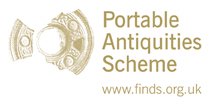Server check!
You are on the training database
Byzantine coin guide
The Western Roman Empire finally fell in AD 476 when the last emperor, Romulus Augustulus, was deposed by a barbarian general. However, the Eastern Roman Empire, with its capital at Constantinople, continued to flourish. Although it lost territory to the Islamic invasions in the 7th century AD, it did survive until 1453 when Constantinople finally fell to the Ottoman Turks under Mehmet the Conqueror. Because Constantinople was founded by Constantine on the site of a Greek city originally called Byzantium, historians have called the Eastern Empire the Byzantine Empire.
Because Byzantine coins were struck after 476 and because they were mostly minted in the Eastern Mediterranean, they are rarely found in Britain. On the database you will find several gold solidi (solidus). These coins are not that unexpected as finds in Britain because gold often travels long distances because it retains its value across different societies. However, there are an increasing number of copper Byzantine coins being found. There is an early group of coins, dating between around AD 498 and 650 which are generally found in coastal areas.
This does suggest that they reflect continuing maritime links between Britain and the Mediterranean, especially on the west and south coasts. For more information, see: Sam Moorhead, ‘Early Byzantine copper coins found in Britain – A review in light of new finds recorded with the Portable Antiquities Scheme’
The following guide provides a list of rulers, mints and denominations. In due course, illustrations will be added.


